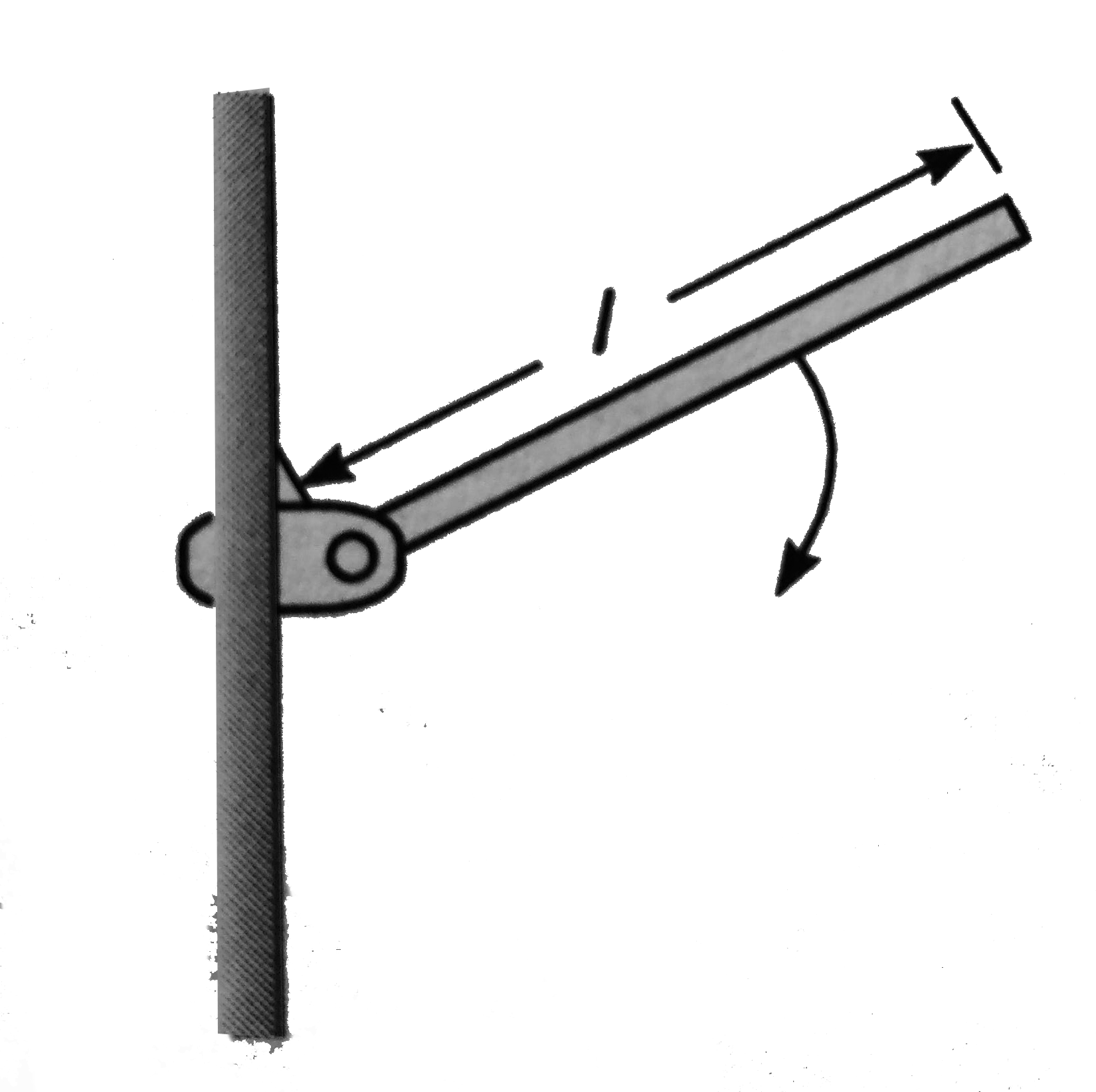
A thin plank of mass M and length l is pivoted at one end. The plank is releaed at 60∘ from the vertical. What is the magnitude and direction of the force on the pivot when the plank is horizontal?

Let ω be the angular velocity and α the angular acceleration of rod in horizontal position. Then
α=(Mg)l2Ml23=32gl .(i)
12(Ml23)ω2=Mg(l)4
∴ω=32.gl ..(ii)
Fx=M(l2)ω2=M(l2)(3g2l)=34Mg
Mg−Fy=M(α)=(l2) ltbr Fy=Mg−34Mg=Mg4
∴F=√F2x+F2y
=√104Mg
tanα=FyFx=(Mg/4)3Mg/4)=13
∴α=tan−1(13)
Topper's Solved these Questions
- BOOK - DC PANDEYCHAPTER - ROTATIONAL MECHANICSEXERCISE - Subjective Questions2videos
ROTATIONAL MECHANICS
- BOOK - DC PANDEYCHAPTER - ROTATIONAL MECHANICSEXERCISE - Level 21videos
ROTATIONAL MECHANICS
- BOOK - DC PANDEYCHAPTER - ROTATIONEXERCISE - (C) Chapter Exercises39videos
ROTATION
- BOOK - DC PANDEYCHAPTER - ROTATIONAL MOTIONEXERCISE - Integer Type Questions17videos
ROTATIONAL MOTION
Similar Questions
A thin plank of mass m and length l is pivoted at one end and it is held stationary in horizontal position by means of a light thread as shown in the figure then find out the force on the pivot.
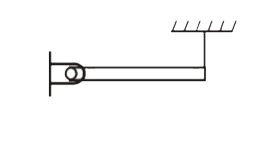 View Solution
View SolutionA rigid rod of mass m & length l is pivoted at one of its ends. If it is released from its horizontal position, find the speed of the centre of mass of the rod when it becomes vertical.
View Solution
Knowledge Check
- Question 1 - Select One
A unifrom rod of mass m and length l0 is pivoted at one end and is hanging in the vertical at one end and is hagingh in the vertical direction.The period of small angular oscillations of the rod is
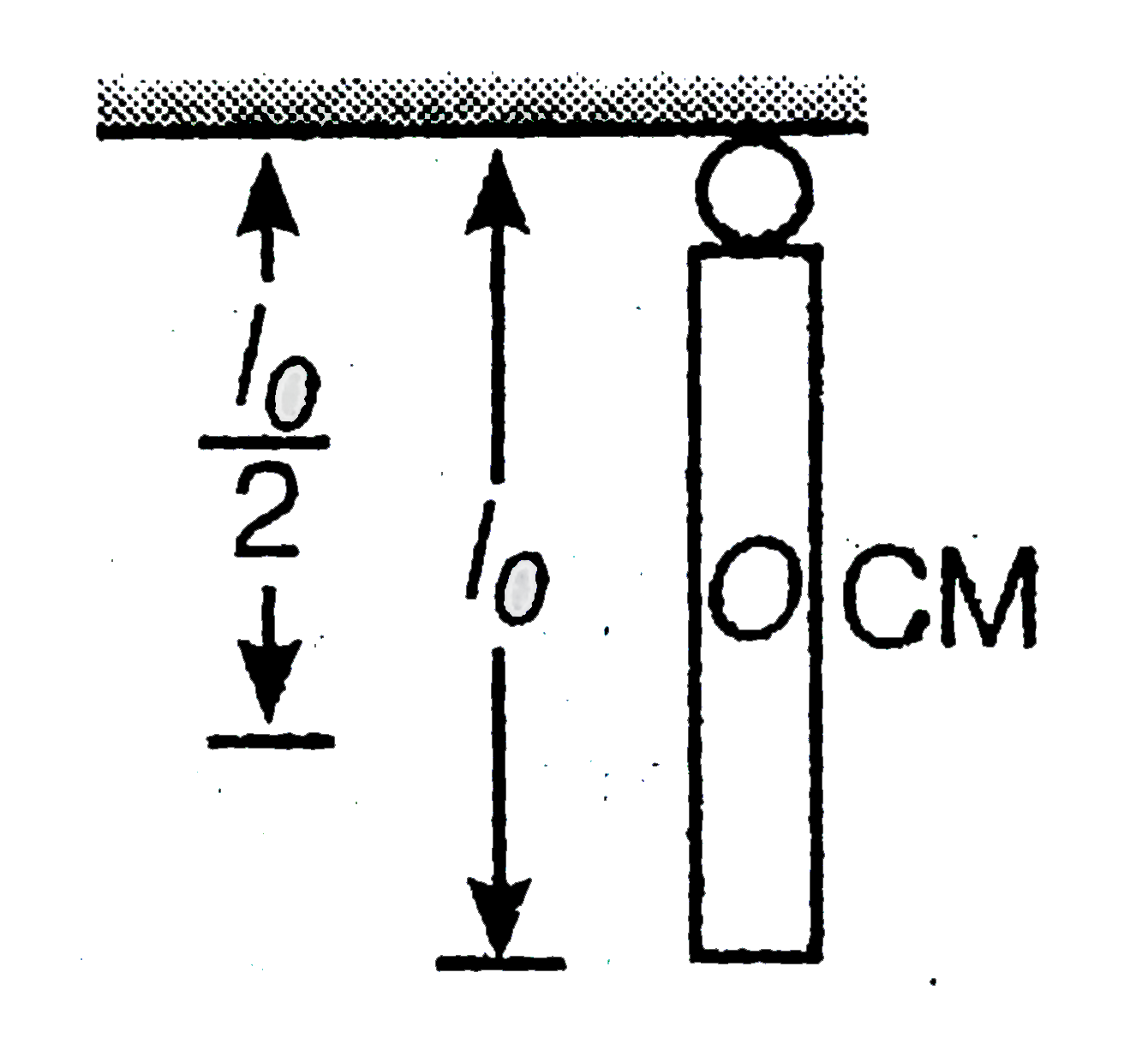 AT=3π√2l03gBT=4π√l03gCT=4π√2l03gDT=2π√2l03g
AT=3π√2l03gBT=4π√l03gCT=4π√2l03gDT=2π√2l03g - Question 2 - Select One
A slender uniform rod of mass M and length l is pivoted at one ens so that it can rotate in a vertical plane, Fig. There is negligible friction at the pivot. The free end is held vertically above the pivot and then released. The angular acceleration of the rod when it makes an angle θ with the vertical is
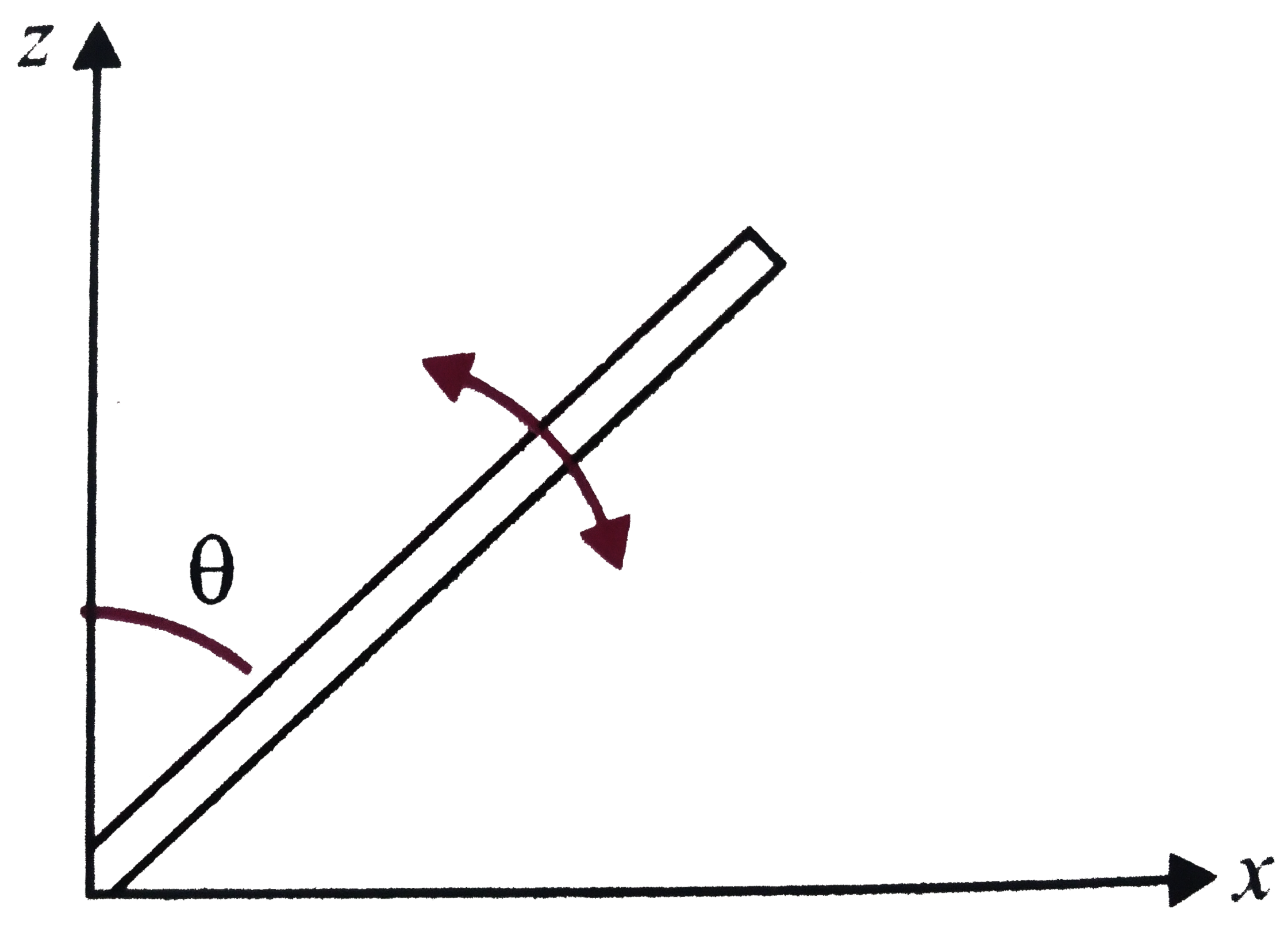 A3g2lcosθB2g3lcosθC3g2lsinθD2g3lsinθ
A3g2lcosθB2g3lcosθC3g2lsinθD2g3lsinθ - Question 3 - Select One
A slender rod of mass m and length L is pivoted about a horizontal axis through one end and released from rest at an angle of 30∘ above the horizontal. The force exerted by the pivot on the rod at the instant when the rod passes through a horizontal position is
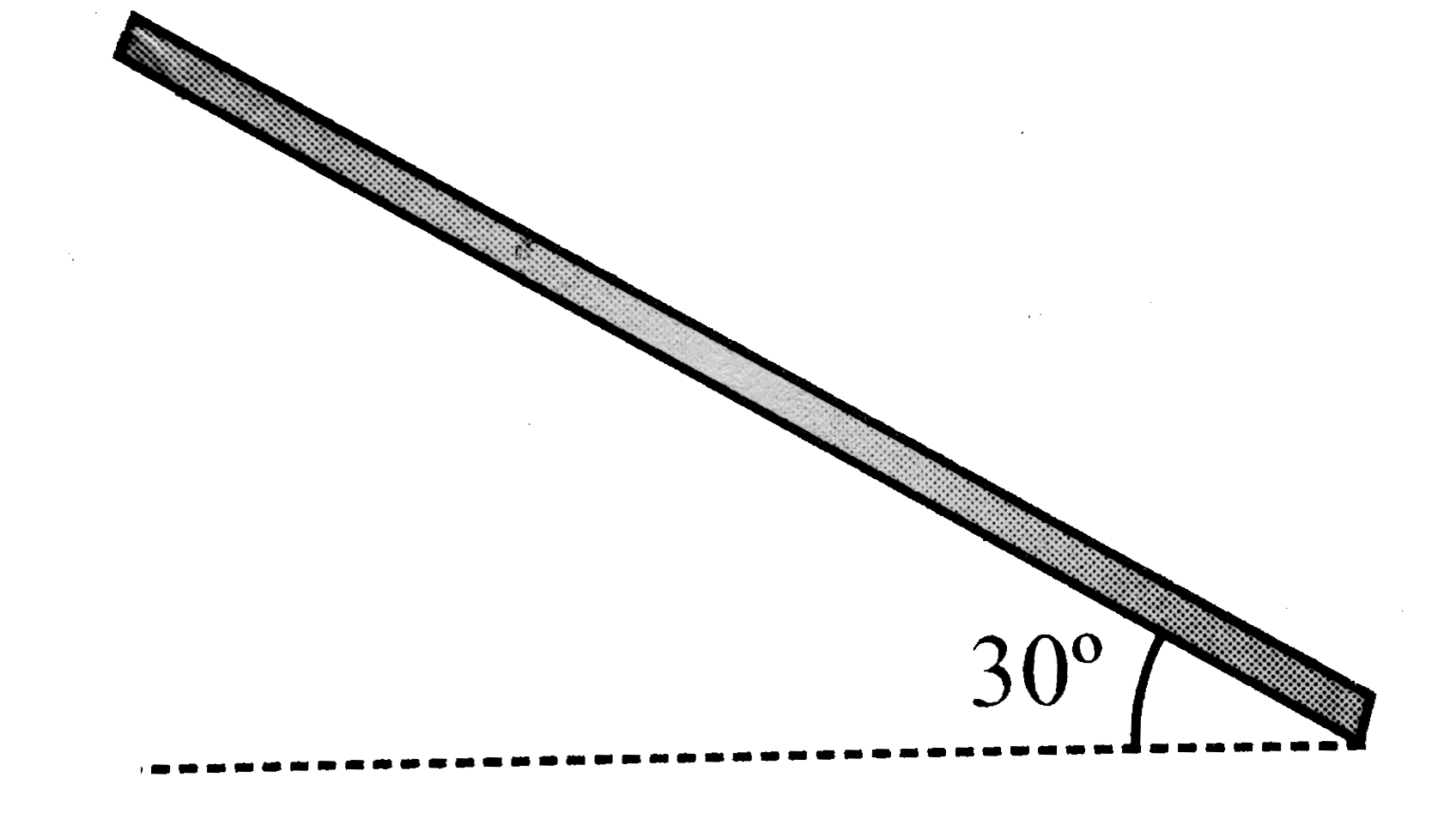 A√104 mg along horizontalBmg along verticalC√104mg alonng a line making an angle of tan−1(13) with the horizontalD√104mg along a line making an angle of tan−1(3) with the horizontal
A√104 mg along horizontalBmg along verticalC√104mg alonng a line making an angle of tan−1(13) with the horizontalD√104mg along a line making an angle of tan−1(3) with the horizontal
A girl jumps from a height h on the end of a see-saw. The see-saw consists of a uniform plank of length I pivoted at its centre. The plank is horizontal before the girl jumps. The mass of the see-saw is twice the mass of the girl. Find the angular velocity of the plank just after the girl jumps on the plank.
View SolutionFigure shown a small block A of mass m kept at the left end of a plank B of mass M=2m and length l . The system can side on a horizontal rood. The system is started towards right with the initial velocity v. The friction coefficient between the rood and the plank is 1/2 and that between the plank and the block is 1/4 . Find
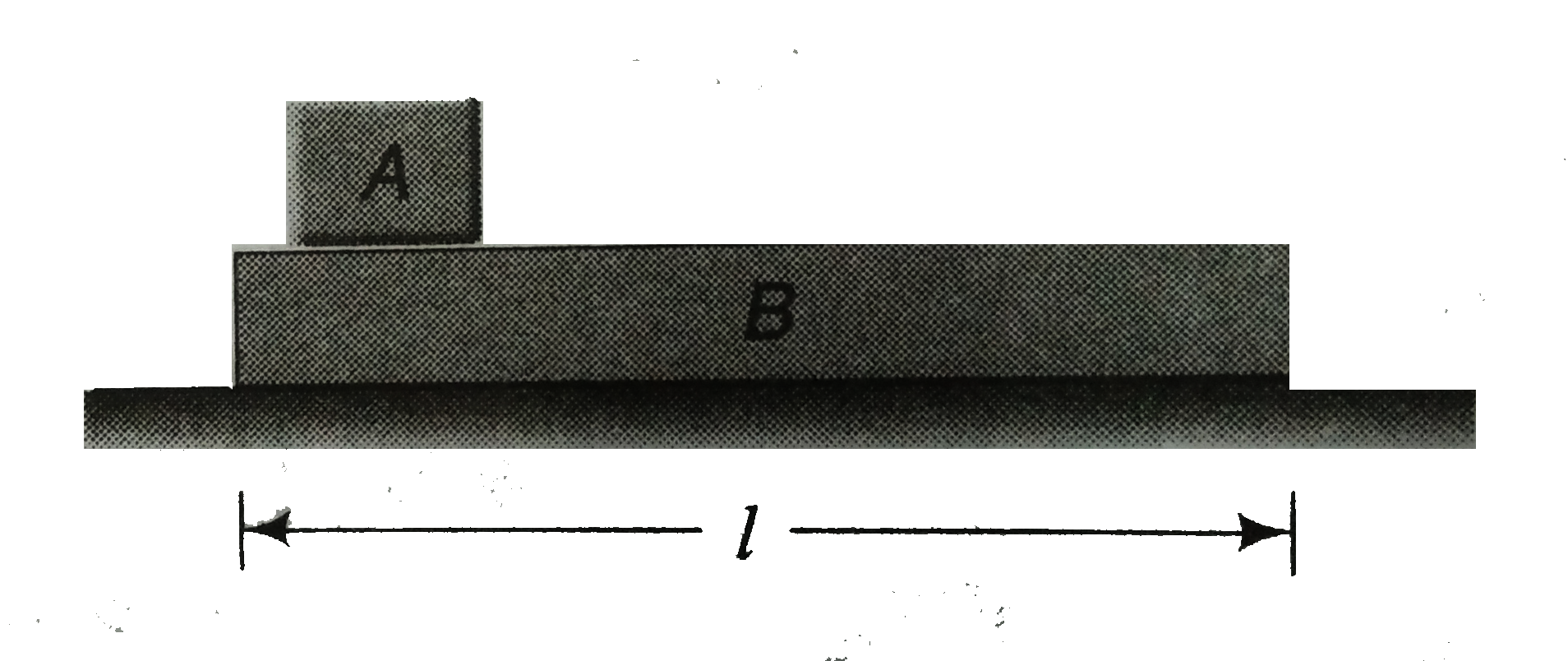
(a) the time elapsed before the block separates from the plank
(b) displacement of block and plank relative to ground till that moment.View SolutionA box of mass 4 kg is placed on a wooden plank of length 1.5m which is lying on the ground. The plank is lifted from one end along its length so that it becomes inclined. It is noted that when the vertical height of the top end of the plank from the ground becomes 0.5m, the box begins to slide. Find the coefficient of friction between the box and the plank.
View SolutionA uniform wooden plank of mass 150 kg and length 8 m is floating on still water with a man of 50 kg at one end of it . The man walks to the other end of the plank and stops. Than the distance covered by the plank is
View SolutionA mass M=40kg is fixed at the very edge oa a long plank of mass 80kg and length 1 m which is privoted such that it is in equilibrium. How far (approx.) from the pivot should a mass of 100kg be attached so that the plank starts rotating with an angular acceleration of 1 "rad"//s^(2)?
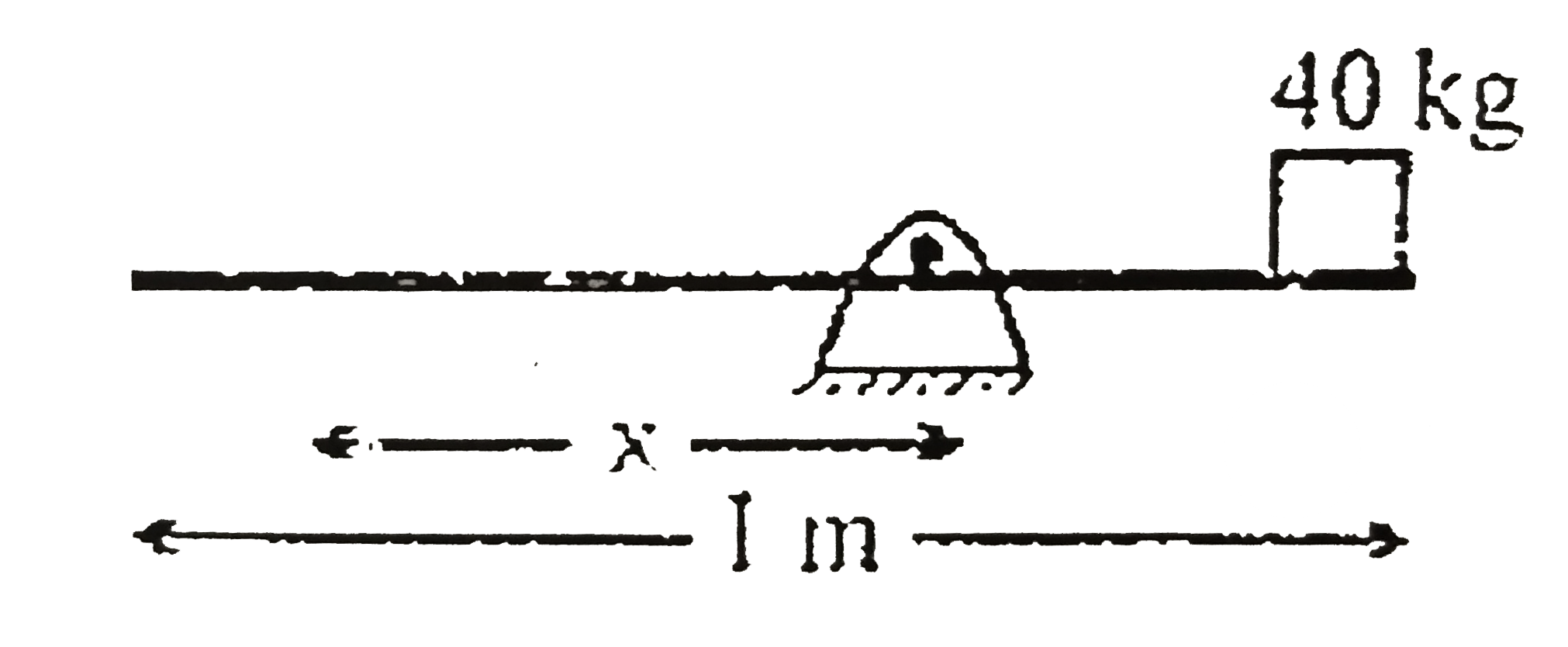 View Solution
View Solution

